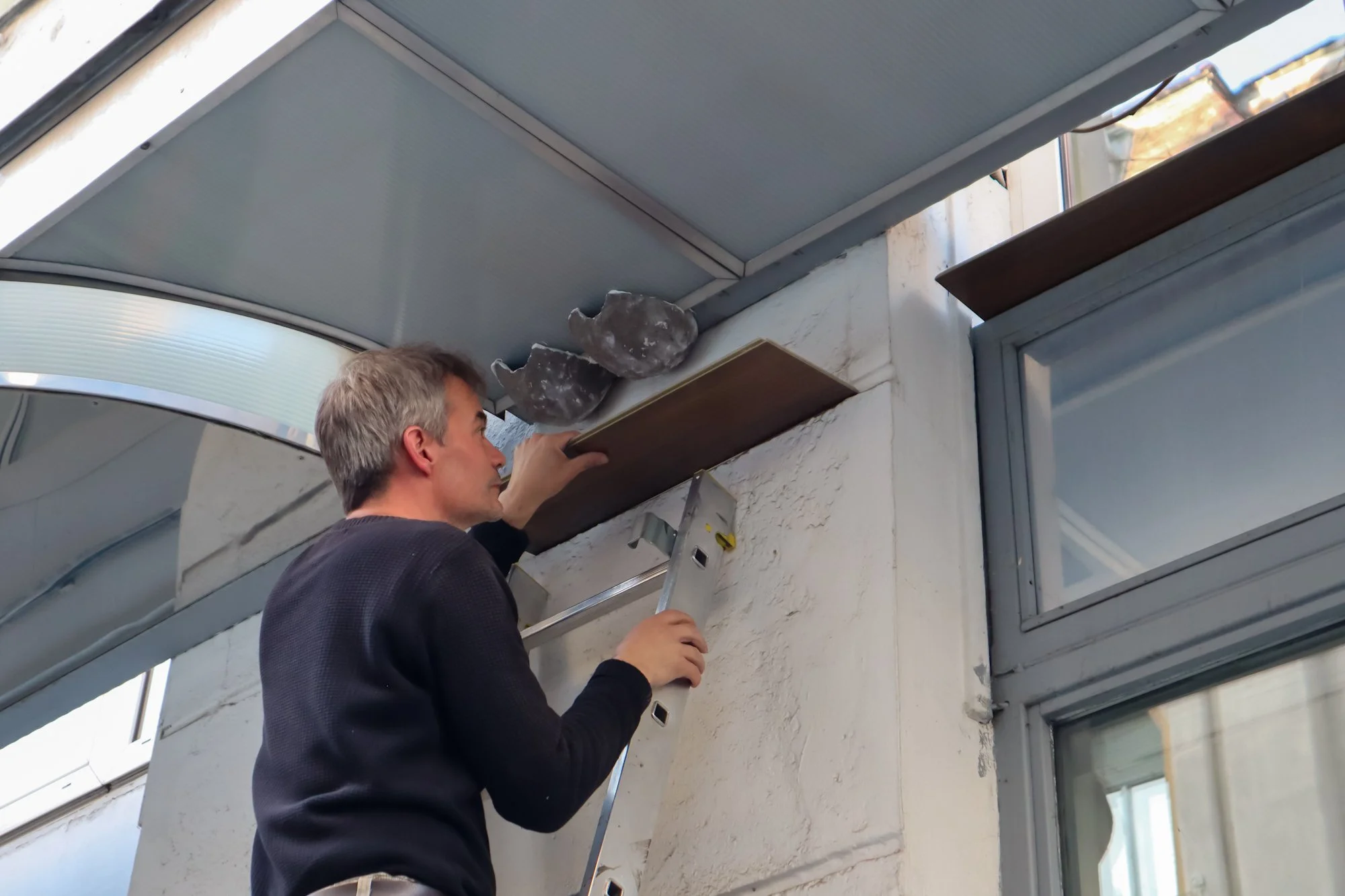House Martin nests installed at the puppet theater's facade in Szeged
In an attempt to help save the decreasing Common House Martin population, Kövér Béla Puppet Theater and the Mondolo Association installed 20 artificial nests on the facade of the puppet theater's building in Szeged on Tuesday, April 18.
The nest cups were prepared and installed by the puppet theater's sculptor, with the help of the Mondolo team who have extensive experience in urban conservation projects. Locationwise, the facade of the building facing Feketesas Street was chosen because it already has many older, natural nests — some still in use — proving that the building is a preferred and traditional nesting place for the house martins.
Installing the nests does not guarantee that the birds will occupy them, but since house martins nest in colonies, it can trigger the birds to build their own nest alongside the artificial ones. A mud collection puddle was also installed near the new nests. This is a solution that helps the birds build or repair their own nests in urban areas, where mud, the natural building material of the nest cups, is scarce or is entirely missing.
Shelves were also placed beneath the artificial nests to collect the birds' droppings. Such shelves are used extensively to keep the area — in this case the pavement — under the nests clean.
Ágnes Kiss, director of the Kövér Béla Puppet Theater explained that environmental awareness is a vital part of the life of the puppet theater, for example, they celebrate every show's premiere by planting a tree. This is the first conservation-oriented cooperation between the theater and the Mondolo Association, and they plan to collaborate on similar projects in the future.
Dénes Bálint, an ornithologist at Mondolo added that due to several reasons, like the decreasing number of insects that these birds feed on, or the lack of mud puddles in the concrete jungle, the number of martins dropped by 50% in Hungary in the last 10 years.
The Common House Martin is a migratory bird that spends the winters in sub-Saharan Africa and returns to traditional breeding places in Europe in the spring. In Hungary, all martins and swallows are protected species.
Photos: Szilvia Molnar / Szegedify

